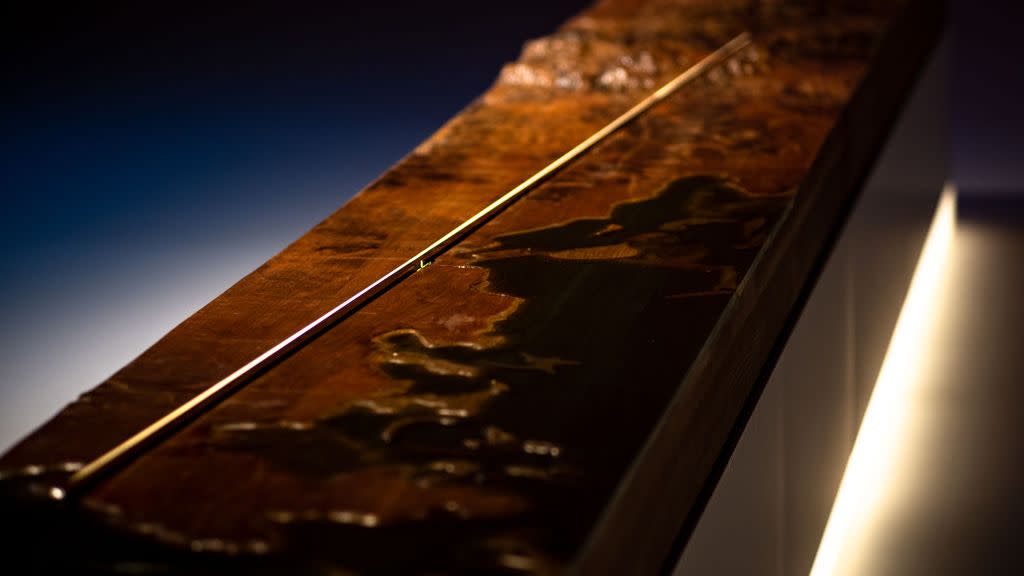Saudi Arabia Is Building an Entire City in a Straight Line. It Makes Zero Sense.

- Oops!Something went wrong.Please try again later.
- Oops!Something went wrong.Please try again later.
"Hearst Magazines and Yahoo may earn commission or revenue on some items through these links."
In 2021, the Kingdom of Saudi Arabia announced its plans to build a desert linear city, called The Line, on a scale never seen before in human history.
Centered around a main high-speed transportation network, The Line’s street-less, car-less design was touted as the future of human habitation by the Crown Prince of Saudi Arabia, Mohammed bin Salman.
However, mathematicians broke down the numbers and calculated what the typical commutes in such a city would look like, discovering that it’d be better the built the city in a circle rather than a straight line
Back in January 2021, the Crown Prince of Saudi Arabia, Mohammed bin Salman bin Abdulaziz Al Saud, announced a megaproject unlike any other. Dubbed “The Line,” this huge urban development project promised to build a city (as its name suggests) in a straight line rather than your typical round urban sprawl. The city—stretching from the Red City to the city of Tabuk 110 miles away—along with its estimated 9 million inhabitants would be entirely car-less, and instead be tied together by a high-speed rail system that could travel from one end of The Line to the other in just 20 minutes.
The idea is a radical departure from typical city design, and the prince’s accompanying slides during his Apple-like presentation two years ago looked almost like concept art for an ambitious sci-fi film. But paradigm-shifting ideas (though this isn’t the first linear city ever conceived) always seem weird to the people used to the old ways of living. Maybe The Line—with its driverless existence and (purported) low environmental impact—makes a lot of sense.
Well, mathematics disagrees.
The Complexity Science Hub, a research organization in Vienna, Austria, published a paper in June in the journal NPJ Urban Sustainability detailing why The Line is a bit of a nightmare for commuters. According to the paper, selecting just two future residents of The Line at random shows why designing a city in a straight line essentially maximizes commutes from point A to point B.
“If its 9 million inhabitants are homogeneously distributed in the city, each [kilometer] will have roughly 53,000 people. If we randomly pick two people from the city, they will be, on average, 57 km [35 miles] apart,” the paper reads. “Although The Line occupies only 2 percent of the surface of Johannesburg, if we pick two random people in Johannesburg, they are only 33 km [20 miles] apart,” the team explained in their paper.
Not here to just naysay a new idea, the researchers offer an alternative proposal called The Circle. Instead of building in a straight line, city planners could take the same buildings proposed for The Line and arrange them in a circle instead. Making this simple change, at least on paper, would create a city only four miles in diameter, essentially packing 9 million residents in a city the size of Pisa, Italy—the same surface area proposed for The Line.
Residents would be within walking distance of nearly 25 percent of the entire city, and if they walked only a mile more, they’d be within 66 percent of the city. Oh, and the average distance between two random residents—about 1.8 miles.
Although the paper mostly focuses on the mathematical shortcomings of The Line’s design, it also brings up some good practical problems. If the city’s main train line malfunctions for any reason, for example, it could effectively cut off residents from millions of people—an idea that’s unthinkable in today’s modern metropolises.
But the Complex Science Hub’s well-reasoned arguments are likely for naught, as construction on The Line has already begun. We’re getting a city built in a straight line—whether it makes mathematical sense or not.
You Might Also Like

